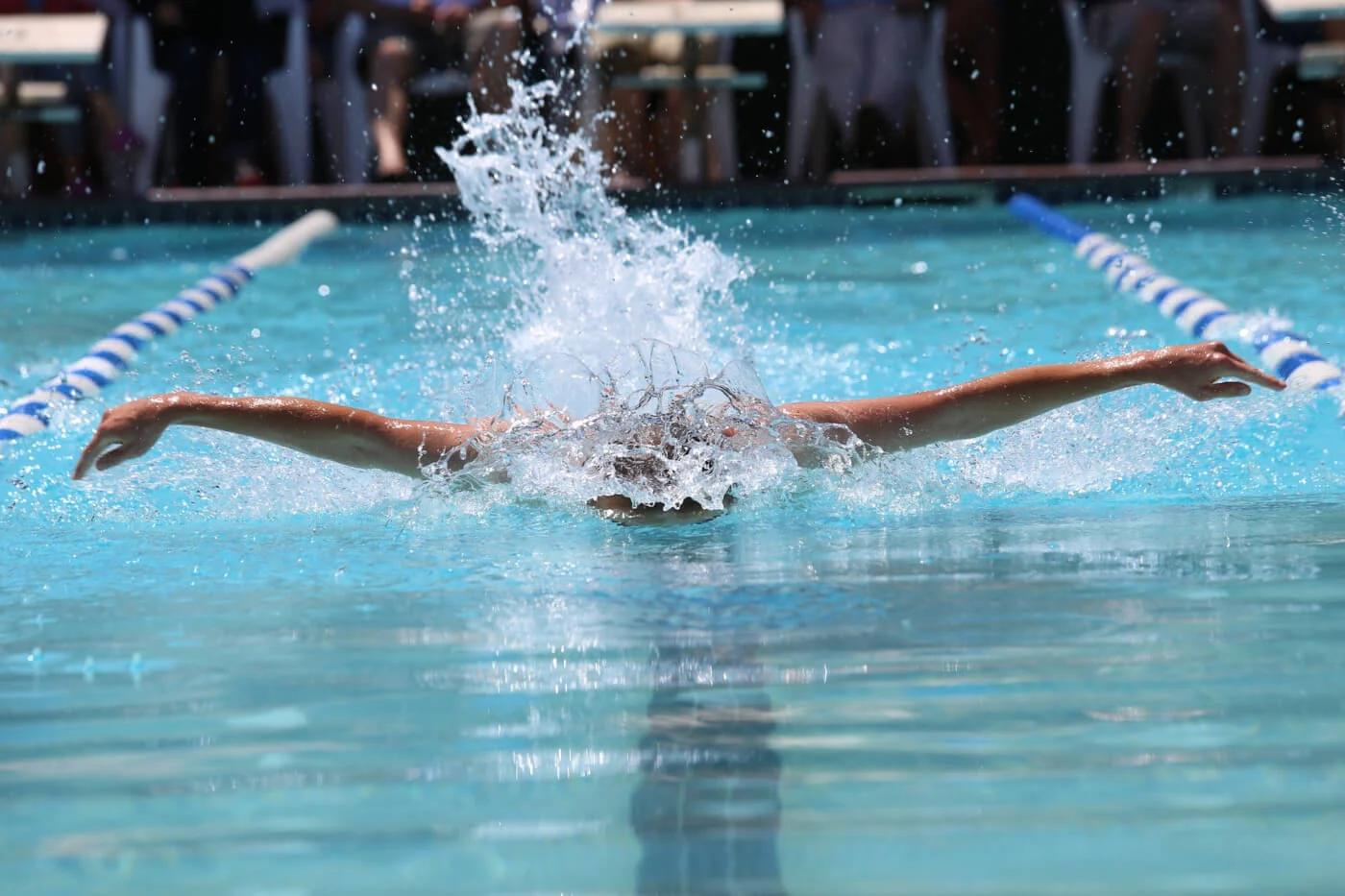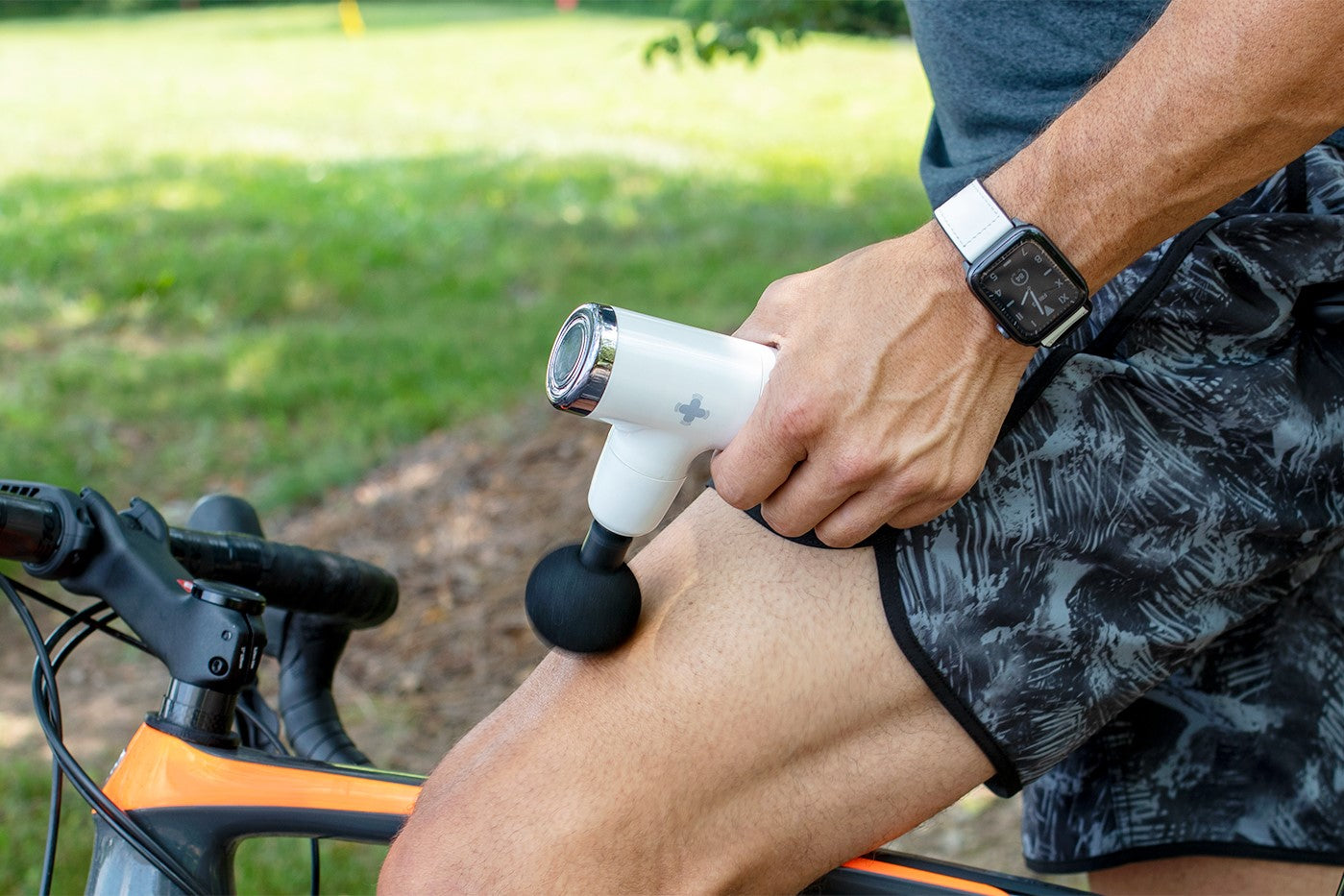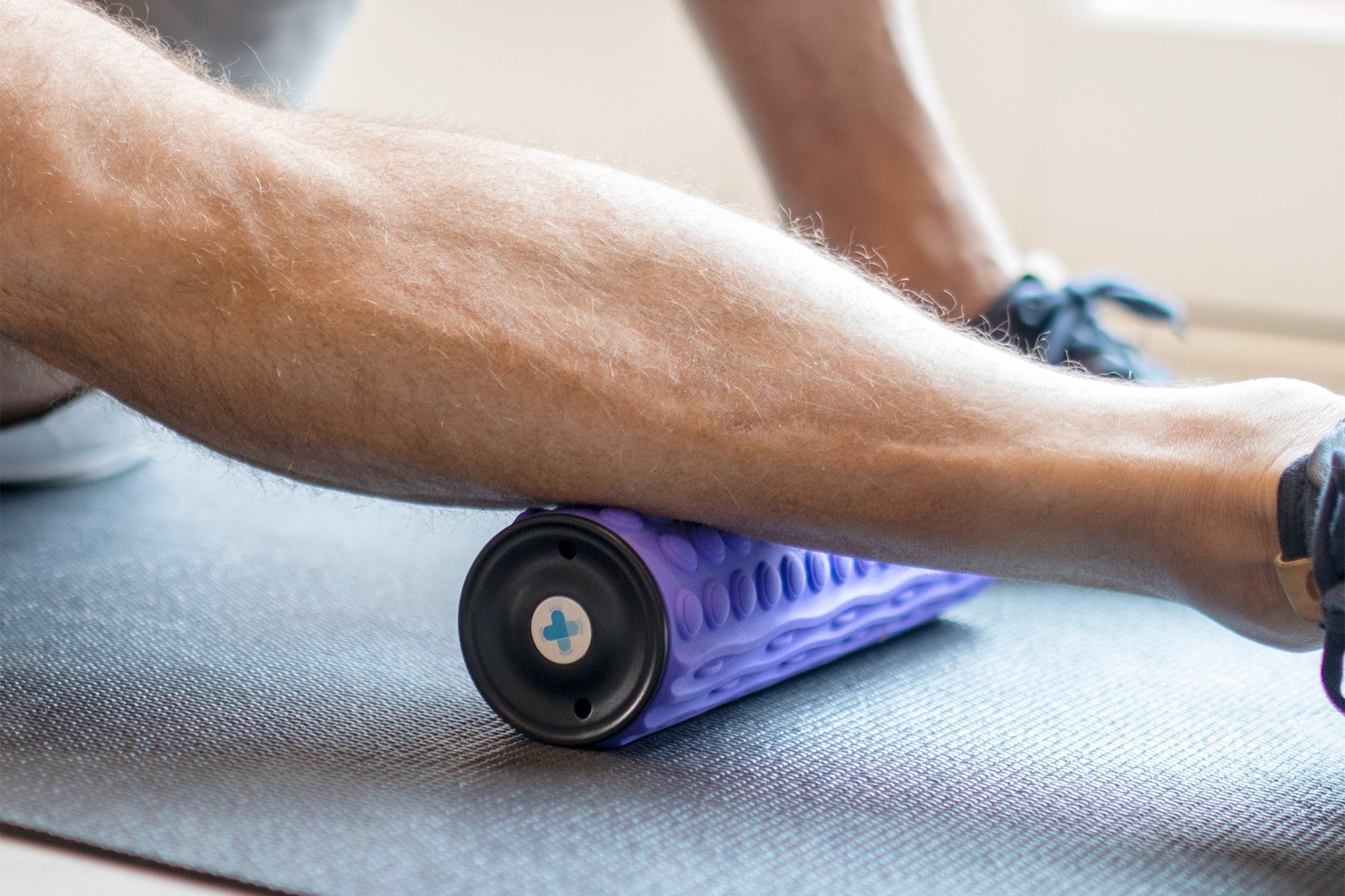At the 2012 London Olympics, a team of 800 massage therapists helped care for athletes at the event — which goes to show just how valuable a good massage can be. And for swimmers specifically, this natural tool can come with some surprisingly positive perks.
Whether you want to relieve post-swim soreness or loosen up before a race, massage can enhance your training and recovery. But what exactly are the benefits, and how can you start?
Below, we’ll cover the benefits of massage for swimmers, along with the best self-massage gear to consider investing in.
Navigating the Physical Demands of Swimming
Nearly every muscle in your body works while you swim, from your trapezius muscles all the way down to your feet. And whether you’re at an elite or beginner level, you could be swimming for thousands — if not tens of thousands — of yards per week.
Put another way, swimming can be taxing on the body. And if you want to recover, perform, and feel your best, having a solid training routine is key.
Of course, it’s true that sleep, nutrition, and rest days are all important pieces of the puzzle. But if you want to go beyond that, massage can also help you manage the demands of this intense sport.
7 Benefits of Massage for Swimmers
So, how can massage impact your training? From mobility to pain management and recovery, here are seven benefits of massage that every swimmer should know about.
1. Better Mobility
Swimming relies on your ability to move freely — especially in your shoulders, which play a big role in strokes like freestyle, backstroke, and butterfly. The good news? The right massage techniques can help support your shoulder range of motion (ROM).
In a 2017 review, researchers looked at how massage affected shoulder movement. Incredibly, they found that it boosted shoulder ROM, especially for flexion and abduction. They also noted that sports massage brought the best results, using methods like gliding and friction to break up tension.
2. Improved Comfort During Recovery
Along with better ROM, a good massage can also help boost your recovery between training sessions.
In fact, it’s even been shown to improve delayed onset muscle soreness (DOMS) after exercise. This can be especially helpful when you’re preparing for a swim meet and need your recovery to be as smooth as possible until it comes time to compete.
An added perk is that you don’t have to visit a masseuse to get these benefits for yourself. Instead, a simple tool like a foam roller can be a great way to soothe soreness after swimming and other water-based exercises.
3. Warms Up the Muscles

Another surprising benefit of massage for swimmers is that it can aid in your warm-up routine — and massage guns are popular tools for this. These handy devices use quick bursts of pressure to stimulate the muscles, loosen up stiffness, and boost healthy blood flow.
If you opt for a massage gun, just a few minutes of light, sweeping motions can help warm up your arms and shoulders before a swim. But if you don’t have access to one, a hands-on massage can also work well to loosen up your muscles pre-training.
4. Better Sleep
As an athlete, you probably know firsthand just how important sleep is for your recovery.
This is the time when your body releases growth hormones, restores your energy, and repairs damaged and overworked muscles. And if you’ve been looking to get better sleep lately, massage may be worth a try.
The right techniques can put your body into a deep state of relaxation, which can slow your heart rate, calm your breathing, and even temporarily reduce blood pressure. In turn, this can help you doze off faster and improve your sleep quality as a whole.
5. Injury Prevention
When it comes to injury prevention, many athletes swear by massage as their go-to. But why does it seem to be so effective?
Many common injuries stem from muscle stiffness, overuse, or poor range of motion. And because massage breaks up tension, it can help your joints move more freely. Plus, it can give your body some TLC in between intense swim workouts — curbing the chances of you experiencing pain due to overuse.
Sports massage therapy is the most common style athletes use to prevent injuries. It’s specially designed to help boost circulation, bring oxygen and nutrients to the muscles, and stretch tense, achy areas that could limit your movement.
6. Reduces Stress and Refreshes Your Mind
Swimming is a tough sport physically — but there are many mental hurdles that can come with it. For example, you might find it stressful always trying to beat your best times. Or, you might notice a dip in your mental health during peak training seasons. In any case, massage can be a great tool to use when you need a mental boost.
Research suggests that massage can elevate mood, reduce stress, and boost emotional health as a whole. As a result, adding it to your self-care kit — especially during busy training seasons — could help you feel better and manage stress more effectively.
7. Muscle Pain Relief
Massage isn’t just for easing DOMS after a swim workout; it can also help with many other types of muscle pain.
For instance, it can help melt away leg cramps, soothe back pain, and bring near-instant relief to stiff, achy neck muscles. Plus, it’s able to break up tight bands of tissue that could be restricting your movement while you swim.
Soothing Common Swimmer Injuries
For many athletes, massage can be a helpful way to deal with training-related aches and pains. And if you stick to swimming long-term, there are some common injuries that you might encounter along the way. These include:
- Swimmer’s shoulder or shoulder impingement
- Biceps tendonitis
- Rotator cuff tendonitis
The good news? In cases like these, massage therapy may be able to aid in your comfort and recovery. The right techniques can boost blood flow, alleviate pain, and keep your muscles loose and relaxed as you heal.
Note: As a rule of thumb, it’s generally best to avoid massaging an injury in the first 2-3 days after it occurs. But once you’re out of this initial stage, massage can often be a safe and effective way to find relief.
Types of Professional Massage for Swimmers
Some of the most popular massage styles out there include deep tissue, hot stone, and aromatherapy. And as long as you don’t have any medical conditions that might be worsened by massage, you can opt for any kind you like.
With that being said, there are a few specific massage styles made for athletes like swimmers. These include:
Pre-Event Sports Massage
In general, sports massage uses a variety of techniques to loosen stiff muscles, increase blood flow, and promote recovery. But pre-event sports massage can look a little bit different than what you’d use post-event.
Pre-event massage is usually fairly short — just about 10 to 15 minutes — and focuses on warming up the muscles. This can mean short, quick bursts of pressure to promote circulation and ready the muscles for activity. In addition, therapists may use:
- Compression over larger muscle groups
- Friction to loosen up stiff joints
- Range of motion exercises and gentle stretching to prepare your body for more intense movement
Post-Event Sports Massage
On the flip side, post-event massage focuses on supporting your overall recovery after a competition. In these sessions, therapists use a variety of lymphatic drainage techniques, gliding, and kneading to help restore blood flow and offset muscle soreness.
Aside from that, they may use specific techniques to prevent and reduce muscle cramps — which can be fairly common after swimming.
Post-event massage also isn’t limited to the day of an event. Many athletes choose to get multiple massages in the weeks following a competition to speed up recovery and get back into action feeling their best.
Swedish (Relaxation) Massage
Although Swedish massage isn’t designed specifically for athletes, it’s an excellent option for swimmers who want rest and relaxation. It still aids in the recovery process by using light pressure to promote healthy circulation in the body — but overall, it focuses more on stress and tension relief.
The techniques include:
- Effleurage (long, gliding strokes)
- Petrissage (rolling and kneading out muscle tissue)
- Friction (short, side-to-side strokes meant to break up pain points and adhesions)
- Tapotement (tapping using the edges of the hands)
Tips for Trying Professional Massage
If you’re interested in trying professional massage but aren’t sure what to expect, you’re certainly not alone. Here are some tips that can help you stay more at ease during your session:
- Before you head to your appointment, think about any pain points or stiff muscles that you want your massage therapist to focus on.
- Arrive 5-10 minutes early so that you have time to fill out forms and have a consultation.
- Drink plenty of water to stay hydrated after your session.
- Avoid coming in if you feel sick or have a fever.
- Be communicative. Let your therapist know what feels good and what doesn’t, and know that you don’t have to sit through anything that feels painful or uncomfortable.
- Avoid massaging any fresh, acute injuries.
One final tip is to talk to your doctor if you have any medical issues that may be affected by massage. Although it’s usually very safe, there are some situations when you may need to wait or skip it altogether.
Best Self-Massage Gear for Swimmers

Massage technology is advancing every year, and there are plenty of staple tools that can make a big difference in your recovery kit. Three accessible, easy options include:
Massage Guns
Powered by percussive therapy, massage guns are some of the best massage tools for swimmers. They deliver quick, deep bursts of pressure to the muscles, helping to bring blood flow and pain relief in just a few seconds.
They also come with many head attachments, making it easy for you to adapt your session to the muscle group you’re working on.
For example, the round attachment is perfect for large muscles like the quads and hamstrings, while the smaller attachments can help you focus on more targeted areas like the forearms.
How To Use a Massage Gun
Here are the basic steps to using a massage gun:
- Start your massage gun at its lightest speed.
- Glide it at an angle along your muscles for 10 to 20 seconds.
- Then, increase the intensity to your preferred level. Continue to massage for 1 to 2 minutes per muscle group.
- As a rule of thumb, it’s best to avoid using your massage gun on bones or areas without much soft tissue.
Foam Rollers
Foam rollers are some of the most user-friendly and convenient self-massage tools on the market. And if you’ve ever visited your local sports store, you’ve probably seen a variety of them on the shelves.
Small, smooth rollers are great for basic tension relief, while more textured rollers can help with deeper, more targeted work. At any rate, these simple tools are known to help improve muscle health, mobility, and workout recovery.
Plus, many foam rolling exercises involve both stretching and massage — making them great for flexibility and ROM. And although they take more effort than electric massage tools, they’re still one of the best options for swimmers wanting to boost mobility.
How To Use a Foam Roller
Foam rolling exercises come in many forms — and because these are manual tools, you’ll need to position your body differently depending on your target area. The good news is that there are plenty of videos online explaining how to do different techniques.
For a swimming-focused example, here’s how you can foam roll your shoulders and upper back muscles:
- Grab a medium-sized foam roller, and place it on the ground behind you.
- Lean back until the top of your back is resting on the roller.
- Keep your chin slightly tucked, feet on the ground, and knees pointing upward. (Essentially, you should almost be in a classic sit-up position.)
- Use your leg strength to lift your body off the ground. Then, begin rolling your upper back using slow, controlled motions.
- Optionally, you can gently rock towards the left and right for even deeper relief. When you find what feels like a knot or stiff muscle, pause and hold the pressure for ten seconds.
- Repeat for a total of 2 to 4 minutes.
Massage Balls
When it comes to home massage gear for swimmers, massage balls can come with some unexpected benefits. These tools are great for targeting pain points, easing stiffness, and warming up muscles that could use a boost before swimming.
You can do almost any massage ball technique with a simple tennis ball. But if you want deeper relief, you can opt for an electric option with a textured surface to work deeper into tense, sore muscles.
How To Use a Massage Ball
For the most part, using a massage ball is just as simple as it sounds.
To start, you’ll want to place the ball between your target muscle and a wall or the floor — whatever is more comfortable for you. From there, you can roll the muscle with any amount of pressure that you prefer.
For example, you can massage your shoulder blade muscles (aka your rhomboids) by following these steps:
- Place the ball on a yoga mat, and lean into it so that it’s right under your rhomboid. Be sure that the ball is next to your spine and not directly on it.
- Slowly roll the muscle for 1 to 2 minutes using up-and-down, side-to-side, and circular motions.
The Takeaway on Massage for Swimmers
As a swimmer, it’s not uncommon to experience wear and tear throughout your body — whether it’s due to post-training soreness or overuse-related injuries like swimmer’s shoulder.
Fortunately, the right massage techniques can help soothe pain, reduce DOMS, and even increase range of motion. And for those healing from certain conditions, it may improve your comfort during the recovery process.
If you have a medical issue or recent injury, be sure to talk with your doctor before trying massage. Once you get the go-ahead, you can grab a massage gun, foam roller, or other tool to start enhancing your swimming recovery routine.
Pick up the Accuvibe Mini massage gun today to get started, or explore MedMassager’s full line of recovery tools here.



